“I didn’t notice that I was mostly playing songs written by men because… we’ve been socialized through jazz culture to think that that’s normal….
“This [is the] corrective work that needs to be done to make sure women’s voices as creators and intellectual thinkers in jazz are amplified, as well to make sure they—we—are not left invisible in the future…
“The overall goal is to change the culture, to say that these women have always existed. And there’s a lot more coming, and we need to pay attention.”
Terri Lyne Carrington
In the world of classical music, we have a similar situation, only worse. The so-called “canon” includes no music by female or non-binary composers. It also lacks a single work by a composer of color. Tonight’s program may be a small remedial step, but it should go a long way toward demonstrating what we’ve been missing.
“Lift every voice…” Music can’t solve social problems, or end cycles of poverty or inequities in health outcomes. What it can do is give voice to our experience of the world through the language of the spirit. And when every voice is heard, our world is infinitely richer.
Fantasia on Lift Every Voice and Sing (1st stanza)
arranged and orchestrated by James V. Cockerham
lyrics: James Weldon Johnson (1871–1938)
music: J. Rosamond Johnson (1873–1954)
Lift ev’ry voice and sing,
till earth and heaven ring,
ring with the harmonies of liberty.
Let our rejoicing rise
high as the list’ning skies,
let it resound loud as the rolling sea.
Sing a song full of the faith that the dark past has taught us;
Sing a song full of the hope that the present has brought us.
Facing the rising sun of our new day begun,
Let us march on till victory is won.
Shirley Graham could be the patron saint of tonight’s program. Born in 1896 to AME Church leaders in Indianapolis, Graham “had a lifelong passion for advancing her perspectives on social justice” writes musicologist Sarah Schmalenberger. “In a never-ending quest to expose the injustices against people of color worldwide, Graham modulated the rhetoric of her political voice many times and in many ways. Music and [the writing of] plays ultimately proved ineffectual as agents for social change, and so she transformed herself into a journalist and public advocate for socialism.”
Beginning in the mid 1930s, Graham began a romantic relationship with W.E.B. Du Bois. They married in February of 1951. She was fifty-four; he was eighty-three. They were a formidable duo: activists working to improve the lives of people in underserved communities in the United States and throughout the African diaspora. Also in 1951, the U.S. Department of Justice indicted W.E.B. Du Bois, accusing him of being an agent of the Soviet Union, and for engaging in “un-American” activities. He was acquitted by a federal judge for a complete lack of evidence.
Dr. Lucy Caplan is Assistant Director of Studies and Lecturer in the History and Literature program at Harvard University, and soon to be Assistant Professor of Music at Worcester Polytechnic Institute. She teaches courses that “span the fields of American studies, African American studies, cultural history, and musicology.” While a junior at Harvard College, she came across a short score of Tom-Tom, an opera Graham wrote in 1932. The score is among Shirley Graham’s papers, housed at the Schlesinger Library at the Radcliffe Institute for Advanced Study. The discovery has led to one of the most intriguing, and telling, of all stories about works that have, until now, been left in the shadows.
In a July 2020 blog post for Caramoor—where excerpts from the opera using piano accompaniment were performed—Caplan wrote:
“Ten thousand spectators came on the first night; fifteen thousand more on the second. They filled the stadium on the lakefront, marveling at the multi-tiered stage, the elephant that lumbered across it, and the thirty-foot waterfall towering above. As the sun set, a light rain began to fall. Its rhythmic patter merged imperceptibly with the sounds emanating from a battalion of percussion instruments. Four soloists and a chorus of hundreds appeared. Their voices guided the audience out of the drizzly present—Cleveland, summer, 1932—and into the sweeping epic of Tom-Tom, the world-premiere opera unfolding onstage.
“Composed by 35-year-old Shirley Graham, Tom-Tom was the first opera by a Black woman to be produced by a major company in the United States. Over three acts, it hurtled through time and space, offering a diasporic narrative of African American history that compressed centuries and continents into a work of vast aesthetic proportions. One critic called it a “revolutionary project.” Another deemed it an “opera which marks an epoch in the history of creative music in this country.” A third proclaimed that it was “new opera. Something different from what has preceded it in history.” Yet despite the immense success of its first production, Tom-Tom disappeared from the stage. The opera has not been staged since its 1932 premiere.
“Tom-Tom began its life as a one-act play that Graham wrote in 1929, subtitled the Spirit of Negro Music, and described as ‘a drama of the development of Negro music from the first faint beatings of the African tom-tom to the most finished products of our trained musicians today.’ She enrolled at Oberlin two years later, intending to complete undergraduate and graduate degrees in musicology. After the opportunity to write Tom-Tom arose, she took a semester’s leave from Oberlin, rented a room with an upright piano, and worked ceaselessly for three months until Tom-Tom was ready for the stage.
“The dazzling success of Tom-Tom’s premiere suggested that the opera would have a long life ahead. Plans were made for future performances: an autumn showing at Madison Square Garden, a tour of Europe the next year. Yet these never came to be. Despite Graham’s repeated attempts to secure the time and funding necessary to revise her work, various other personal and professional demands interfered. As the years went on, the possibility of Tom-Tom returning to the stage grew ever slimmer; the Great Depression only exacerbated these conditions, of course. Moreover, as Graham’s politics moved further leftward and her career moved away from the arts, the likelihood of an opera company taking on this work plummeted: what opera company would stage a work by a Black woman affiliated by the Communist party in the Cold War-era United States? Tom-Tom’s marginalization has created a sort of ripple effect: other operas not written, other sounds not heard, other ideas not considered.”
Tonight’s performance is likely the first full-orchestra realization of the Tom-Tom Overture since the opera’s premiere. The orchestration is by longtime Landmarks collaborator, violinist, and composer, David Kempers. The use of the tom-tom as a percussion instrument—evident from the first bar—is “a unifying device meant to evoke the shared roots of various African diasporic musics,” Caplan writes. “In a promotional article for the opera, [Graham] discussed its significance: ‘To me, African life and music always has been symbolized by the tom-tom…’”
On July 5, 1943, composer Florence Price wrote a letter to the Music Director of the Boston Symphony. It began with now-infamous words: “My dear Dr. Koussevitsky, To begin with, I have two handicaps—those of sex and race.” She went on to ask if he would take the time to examine a few of her scores. Koussevitzky was a passionate advocate for composers and new work, and no doubt received countless such letters in his career. But as far as anyone knows, he took no interest in Price’s music, and never replied to her request.
Florence Price was born in Little Rock, AR in 1887. She attended the all-Black Capitol Hill School, graduating as valedictorian in 1902, at the age of fourteen. She gained admission to the New England Conservatory as a composition student of President George Chadwick. Although the Conservatory had already accepted several Black students, Price’s mother registered her birthplace as Puebla, Mexico, believing that her daughter would face less racial animus if teachers and students took her to be Mexican. Price was the final performer on the program of graduating seniors in Chadwick’s class, an indication that he held her in high regard.
While still a student at the New England Conservatory, Price drafted a work that led to the greatest public triumph of her career. The Chicago Symphony’s premiere of her E minor Symphony in 1933 marked the first time any major American orchestra had performed a symphony by a Black woman. In 1936, Shirley Graham Du Bois wrote, “Spirituals to symphonies in less than fifty years! How could they attempt it? Among her millions of citizens, America can boast of but a few symphonists… One of these symphonists is a woman! Florence B. Price.”
Despite her early success, Price’s name and catalogue were almost completely forgotten after her death in 1953. Then, in 2009, a large trove of scores was found in her former summer home in St. Anne, IL, south of Chicago. Since then, her four symphonies, shorter works for orchestra, songs, and piano pieces have been widely performed. She is, in a sense, the composer of the moment.
Price wrote Dances in the Canebrakes for piano in 1953, shortly before her death at the age of 66. Her younger colleague, William Grant Still—who also attended high school in Little Rock—later orchestrated its three movements. A canebrake is a patch of ground thickly covered in cane plants, an imagined setting tying the music to the rural south, and to popular dance styles Price knew as a child.
Alex Ross observed in The New Yorker: “The anachronisms in Florence Price’s music are, in the end, no flaw. Listening to her, I have the uncanny sense of hearing the symphonies and operas that women and African Americans were all but barred from writing during the Romantic heyday, when the busts on the piano were being carved. She seems to speak from an imaginary past, from an alternative history of an America that lived up to its stated ideals. Frederick Douglass, in his great speech ‘What to the Slave is the Fourth of July?,’ said, ‘We have to do with the past only as we can make it useful to the present and to the future.’ In music, too, we can use the past to build a less imperfect world.”
Margaret Bonds was, at first, Florence Price’s student, then later her close friend. Bonds grew up on Chicago’s South Side, in a home that served as a gathering place for many leading Black intellectuals, artists, and civil rights leaders. After receiving both her bachelor’s and master’s degrees from Northwestern University, she became a leading figure in Chicago’s Black musical community. Like her mother—and Florence Price—she was especially active in the local chapter of the National Association of Negro Musicians. When Bonds performed John Alden Carpenter’s Concertino for Piano and Orchestra with the Chicago Symphony in 1933, she became the first Black soloist ever to perform with that orchestra. She returned again as soloist a year later to perform Price’s Piano Concerto in D minor.
Louise Toppin has worked valiantly over many years to support the publishing, performance, and recording of the work of Margaret Bonds. Until recently, Bonds’s work has been known mainly through a handful of spirituals arrangements. But within the last four years, a sizable catalogue of works for voice, piano, chamber ensemble, chorus, and orchestra has become available to the public. We owe Louise Toppin and the non-profit she heads, Videmus, a deep debt of gratitude for working with members of the Bonds family to preserve and promote the Bonds legacy.
In 2021, Toppin edited and published a 250-page volume, Rediscovering Margaret Bonds: Art Songs, Spirituals, Musical Theater and Popular Songs. Included are several art songs set to poems by Edna St. Vincent Millay, including “Feast,” an epigrammatic celebration of desire, rather than the satisfaction of desire.
“Songs of the Seasons is one of three song cycles Bonds composed,” Toppin writes. “It was not originally conceived as a cycle but consists of four ‘seasonal’ songs assembled by the composer to form a cohesive unit. To create the larger work, she selected two of her early songs (“Poéme d’Automne” from 1934 and “Winter Moon” from 1936) and paired them with two newly composed songs in 1955 (“Young Love in Spring” and “Summer Storm”). The text for all four songs is by the Harlem Renaissance poet Langston Hughes. The imagery in the cycle describes the transformation of ‘love’ throughout the year as a metaphor for our journey through the cycle of life.
“Many of the spirituals in Bonds’s corpus were commissioned by or written for Leontyne Price. Her frequent commissions for Bonds’s arrangements coupled with her recordings and performances introduced Bonds’s spiritual arrangements to a worldwide audience. Although not written for Price, “He’s Got the Whole World” was popularized and associated with Price throughout her career. “This Little Light of Mine” was written in 1962; Leontyne Price recorded it with pianist David Garvey in Carnegie Hall in 1991.”
Undine Smith Moore’s 1981 oratorio, Scenes from the Life of a Martyr, is her magnum opus. Lavishly scored for narrator, four vocal soloists, chorus, and large orchestra, a performance of it is quite a spectacle. Nonetheless, the composer regarded it as a highly personal work: “I wanted to write something for myself for this man… The lives of all martyrs have much in common. This work, written specifically in memory of Martin Luther King Jr., is, therefore, intended to evoke memories of others who have been Valiant-for-Truth… The composer conceives the variety in text… and in musical styles to be appropriate to the memory of a man of all the people…. of all times, everywhere.”
Moore created her own text. It includes original writing, excerpts from poetry of various times and cultures, and quotations from the New and Old Testaments. In juxtaposing text about King with biblical verse, she often draws a connection between the martyrdom of King and the passion of Christ.
Of the oratorio’s sixteen movements, we perform three tonight that lie at the midpoint of the work, a moment of bliss before tragedy strikes. They were the starting point for her work on Scenes, as they were the first movements she wrote. They represent in musical terms what artist Hank Willis Thomas captured in his bronze sculpture, The Embrace, installed on Boston Common. The first song is for Coretta Scott; the second is for Martin:
Soprano (Song of Solomon 2):
8 The voice of my beloved! behold, he cometh leaping upon the mountains, skipping upon the hills.
9 My beloved is like a roe or a young hart: behold, he standeth behind our wall, he looketh forth at the windows, shewing himself through the lattice.
10 My beloved spake, and said unto me:
Tenor:
10 Arise, my love, my fair one, and come away…
14 O my dove, that art in the clefts of the rock, in the secret places of the stairs, let me see thy countenance, [O my dove], let me hear thy voice; for sweet is thy voice, and thy countenance is comely.
Both (Song of Solomon 8):
6 Set me as a seal on thy heart, as a seal upon thine arm: for love is strong as death…
7 Many waters cannot quench love, neither can the floods drown it…
Moore asked Donald Rauscher to orchestrate Scenes from the Life of a Martyr, which she had originally drafted in a piano score only, though she included in that score many directions for orchestration. Rauscher served on the faculty at the Manhattan School of Music for many years, and published important books on orchestration, harmony, and music theory.
Mary Lou Williams—mentor to the likes of Thelonius Monk, Dizzy Gillespie, and Charlie Parker—had an outsized influence on the development of jazz. She grew up in the Hill District of Pittsburgh, an area that grew rapidly in the early nineteenth century, especially with the influx of Haitian families after Haiti gained independence in 1804. Many of these immigrants—largely middle-class free Black families—encouraged their children to study classical music. The Hill District was unusual in that many musicians there were proficient in both classical music and jazz. Mary Lou Williams grew up highly skilled in both, and her influence on jazz as an art form came in part from that versatility.
“In 1945, Mary Lou Williams was playing at a club called Café Society, owned by Barney Josephson,” writes Jeffrey Sultanoff, co-editor of the newly published edition of the Zodiac Suite. “She also had a weekly radio program. Josephson suggested that she write something ambitious for the radio show, and she wound up conceiving a suite based on signs of the zodiac. The individual pieces were to honor her friends born under each of the signs. It was Josephson who suggested a concert of the suite, producing it at Town Hall on New Year’s Eve in 1945.”
For the 1975 Folkways Records release of the trio version of the work, Mary Lou Williams wrote:
“As a composer and musician, I have worked all my life to write serious music that is both original and creative. The Zodiac Suite is the beginning of a real fulfillment of one of my ambitions.
“In writing Aries, I utilized the two people whom I felt best typified the moods and personalities governed by the sign… Billie Holiday, the songstress, and Ben Webster, the saxophonist. Changeable, moody, and impulsive…
“For Taurus… I wrote for those who are creative and said to be lovers of the arts… And what better examples could I select than Duke Ellington, Joe Louis, and Bing Crosby? I have also tried to convey the stubborn quality of individuals born under Taurus… my music for the sign of the bull begins and ends with the same theme, to indicate the personality that ‘only changes when it is forced to do so.’
“Gemini, the twin sign, is dedicated to two men I have known and admired for many years… Benny Goodman is as well known for his work with symphonic concert orchestras as he is for his own swing band. Paul Robeson… is a great singer, actor, and world citizen. Each is at home doing ‘two things at one time.’ And so, in my music, I have used two themes, in discord equally balanced to set the pattern of those born under the sign of the twin.
“Cancer is dedicated to those who like order, peace, and tranquility. The general traits of those born under the sign of the crab are well accented in my selection, which was modeled after the lovely actress Lena Horne, whom I have known for a long time.
“Pisces, the sign of the fish, and the last of the signs of the zodiac, I composed while broadcasting one Sunday afternoon. There is a theme, but no set pattern for this composition, because I think of Pisces people as freedom-loving and imaginative. Of course, those influenced by this sign are thought to be arrogant and ‘high-minded’ too…”
“Pisces” incudes an original song by Williams, a setting of her own lyric:
Life’s a game I play for the best of it,
Score the top, I don’t want the rest of it.
If I play, my heart should do it for the warmth.
By the start, forever I do repeat.
Love has made me lucky, for sure;
In need, I can win whenever I make the start.
I don’t mind when sometimes I take a fall.
Doesn’t bring me down because all in all,
What is living, taking, giving?
Just forever.
Life’s a game I played,
Staying on the side of the winning team.
Life’s a game, whenever you come from behind…
You begin to win like me.
Nkeiru Okoye has been a frequent presence on Boston Landmarks Orchestra programs for nearly twenty years. In 2005, the orchestra commissioned her to compose a work for narrator and orchestra about the life of poet Phillis Wheatley. This year, the orchestra premiered a revised version of that work, Phillis Wheatley: A Musical Journey, at the Salvation Army Kroc Center in Dorchester, during the citywide Juneteenth celebration. Last summer, soprano Sirgourney Cook and the orchestra performed music from Okoye’s celebrated opera, HARRIET TUBMAN: When I Crossed that Line to Freedom.
Okoye writes, “I sat down to compose Voices Shouting Out in the wake of September 11th. However, in my grieving process, I failed to find music within. As a native New Yorker, born within a mile of Ground Zero, I was shaken, and angry. A sudden burst of inspiration and defiance struck some months later… Although I originally attempted to compose a piece, Voices Crying Out, in response to the destruction, I could not. As this nation recovered, we were united: we would resume our lives, using normalcy to defy the terrorism. In the end, rather than ‘crying out,’ my response was Voices Shouting Out, in freedom, as it were, through the music. It was a march to acknowledge those fighting on behalf of our safety, and yet a sparkling celebration of life for those of us who continue living.”
Okoye’s “march” begins with a driving pulse that soon spawns a series of short themes. The rhythms are punched and precise, falling sometimes on and sometimes off the beat. There is energy and attitude, reflecting the pageantry of an HBCU marching band, one of which—the Norfolk State University Spartan “Legion” Marching Band—was practicing beneath the composer’s window as she wrote the work. R&B, pop, and funk coalesce in a style that Okoye associates with Michael Jackson’s swagger. The trumpets blow into “harmon” mutes, giving their sound a cool edge—a tribute to Miles Davis. The middle section of the four-minute work recalls music of the Black church from a generation ago, and especially a song by Donnie McLurkin with the lyric, “We fall down, but we get back up again.” The music is in a style Okoye refers to as “rhythm and gospel.”
Jessie Montgomery may be the hottest composer in America right now. She was Musical America’s Composer of the Year in 2022, and is currently Composer-in-Residence with the Chicago Symphony. She has won the Leonard Bernstein Award from the ASCAP Foundation, and the Medal of Excellence from the Sphinx Organization, with whom she has been affiliated since 1999. Her orchestration of Scott Joplin’s opera, Treemonisha—created in collaboration with Jannina Norpoth—opened last month in Toronto to rave reviews. The new production will travel to multiple opera companies in the US, Canada, the UK, and beyond.
Jessie Montgomery writes, “Soul Force is a one-movement symphonic work which attempts to portray the notion of a voice that struggles to be heard beyond the shackles of oppression. The music takes on the form of a march which begins with a single voice and gains mass as it rises to a triumphant goal.
“Drawing on elements of popular African American musical styles such as big-band jazz, funk, hip-hop and R+B, the piece pays homage to the cultural contributions, the many voices, which have risen against aggressive forces to create an indispensable cultural place.
I have drawn the work’s title from Dr. Martin Luther King’s ‘I Have a Dream’ speech in which he states: ‘We must not allow our creative protest to degenerate into physical violence. Again and again, we must rise to the majestic heights of meeting physical force with soul force.’”
Terri Lyne Carrington was born in Medford, MA, into a musical family. Her mother was an accomplished amateur pianist, and her saxophonist father was at one time president of the Boston Jazz Society. Carrington is founder and artistic director of Berklee’s Institute of Jazz and Gender Justice. SFJAZZ in San Francisco, describes her as “one of the most respected and in-demand drummers in jazz… Just ask Herbie Hancock. Or Wayne Shorter. Or Esperanza Spalding. Or the National Endowment for the Arts, which awarded her the title of NEA Jazz Master in 2021. Carrington keeps evolving; she is increasingly busy as a composer, educator, bandleader, and producer—and as an advocate for gender equity in jazz.” She has won multiple GRAMMY Awards including in 2023 for her album New Standards, which was honored as the Best Jazz Instrumental Record of the Year.
Seen/Unseen: Explorations, Interrogations and Resilience debuted at MIT in May of 2022 under a different title: It Must Be Now! It has since been performed twice at SFJAZZ, and once at the Carr Center in Detroit. Each time, the work’s form and instrumentation have been adjusted for the occasion. The orchestration for tonight’s performance is by the broadly gifted saxophonist, pianist, composer, and conductor Edmar Colón. Originally from Coamo, Puerto Rico, he serves on the faculty of the Berklee College of Music.
“People don’t always ‘see’ or understand the extra burdens Black women face just for entering the world in these bodies,” says Carrington. “The extra burdens are tiresome, but we also have a rich and unique legacy that we uphold and further define. The piece is inspired by dreams of freedom, peace, acknowledgment, rest and fulfillment.”
Employing mixed media, the work has at times featured improvised projected artwork by Mickalene Thomas. Tonight, the performance features an all-star cast of solo jazz musicians, a large symphony orchestra, and a performance by solo dancer Christiana Hunte.
The work has four parts. Toward the beginning of Part I, Carrington reads her poem, Seen/Unseen, which speaks to the work’s vision and purpose:
Part 1: Birth of the Black Woman – from the moment she is birthed, she is both seen and unseen. She does not know the pain to come, but gets a glimpse of it as she comes into the world, and somehow immediately has an understanding of the legacy burdens bestowed upon her for entering in this body.
Poem: Seen/Unseen
Who we are, what we do, what we need, what we mean,
All things seen and unseen, purposeful and driven by hope for the dream
A most powerful thing, our truths, our burdens, our wisdom and strength
Our commitment to the ancestors, our connection ever present, within each breath
As the layers unwrap and the mystery steadily unfolds
The potential is eminent and widely evident, and the voices – majestic and bold
By all counts, I shouldn’t be standing, but I’m here, and not goin’ nowhere
Resilient as ever, and proud, with significant stories to share
Within life and love, within death and hatred, the pains of joy hauntingly come forth
And so with strong backs and strong minds, and pointed focus, what emanates loudly is the willingness to sacrifice, and the devotion to serve
Each decision that aggravates the machinery, and churns the system
Sets forth the promise of something different
And the fight to not only survive, but to thrive, falls addictive, and radiates much like religion
Who we are, what we do, what we need, what we mean
All things seen and unseen, purposeful and driven by hope for the dream
Part 2: Strength and Ingenuity – she assimilates and is able to store personal grief away for the greater cause of the family, the community and the race, while also discovering and fortifying the gift of quietly leading with power and wisdom drawn from ancestors. She constantly pushes ahead, proudly and purposefully, and seemingly effortlessly.
Part 3: Resilience and Unity – though no one should have to be so resilient, she confronts her hopes and dreams, recognizing despair and joy as part of life, and reflects upon the incredible legacy of creativity and invention from enslaved Africans and their descendants.
Part 4: The Urgency of Now: Abolition and Futurism – she realizes that she can participate in determining her destiny. She cares for herself and others, and teaches others that by caring for all, they care for themselves. She tells her country to recognize that she matters, and to honor the contributions of her ancestors that helped to build it and shape its culture. She is determined to release her legacy burdens and be free – physically, mentally and spiritually.
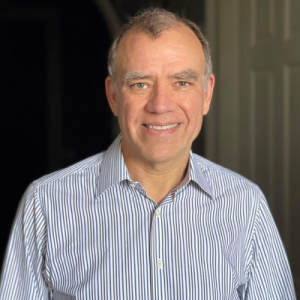 CHRISTOPHER WILKINS was appointed Music Director of the Boston Landmarks Orchestra in the spring of 2011. Since then, he has expanded the orchestra’s mission of making great music accessible to the whole community. He has also helped develop the orchestra’s Breaking Down Barriers initiative, making accessibility a priority in all aspects of the orchestra’s activities.
CHRISTOPHER WILKINS was appointed Music Director of the Boston Landmarks Orchestra in the spring of 2011. Since then, he has expanded the orchestra’s mission of making great music accessible to the whole community. He has also helped develop the orchestra’s Breaking Down Barriers initiative, making accessibility a priority in all aspects of the orchestra’s activities.

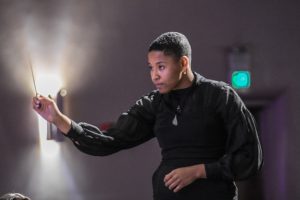
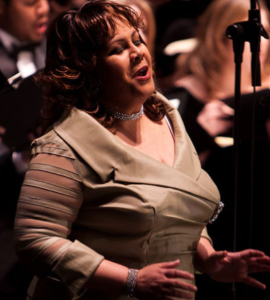
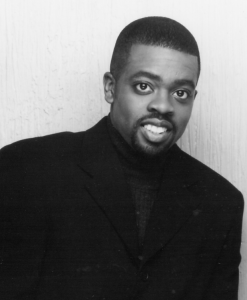
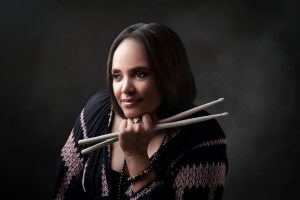
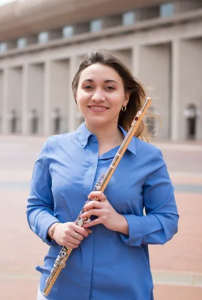 Award-winning, multi-instrumentalist and composer, ANABEL GIL DÍAZ was born on 1994 in Havana, Cuba where she graduated from the Superior Institute of Art. She has developed professionally as a flutist, professor and producer with the Chicago Jazz Philharmonic Orchestra under the conduction of Orbert Davis, since November 2014 to date. Her presentations as both classical and jazz, include performances at renowned venues in the US such as Millenium Park, Auditorium Theatre, Navy Pier Concert Hall, Chicago State University Concert Hall , Amarnick-Goldstein Concert Hall, Berklee Performance Center. And in Europe, at the Auditorium “Paco de Lucía”, the Auditorium of Alicante (ADDA), Auditorium of Torrevieja, Spanish Institute of Radio and Television, Jazz Club Square, Galileo Galilei, AC Jazz Recoletos, Berlin Café, National Auditorium of Madrid. She has received positive critiques by Splash Magazine, Chicago Tribune, El País and El Diario. She received Masterclasses from international artists such as James Galway, Maxance Larrieu, Sibel Pensel, Paquito de Rivera, Sarpay Ozcagatay, Terri Lyne Carrington, Kris Davis, Edmar Colon, Dave Santoro, Marquis Hill, Chris Bullock, Orlando Valle (Maraca), among others. Some of the scholarships she has been granted are the full scholarship from the University of Lynn in Miami; Presidential Scholarship from The Berklee College of Music in Boston, Massachusetts; The Artists Society (AIE) scholarship in Madrid, Spain. She participated in the recording for the “New Jazz Standards Vol. 1” album by Terri Lyne Carrington, released on September 2022; and is current flutist of the Film Music Orchestra (SSP) at Berklee College of Music. Most recently in 2023, she has been accepted to the Film Scoring Academy of Europe in Sofia, Bulgaria and to DePaul University in Chicago, both to continue her Master studies in Film Scoring (MFA).
Award-winning, multi-instrumentalist and composer, ANABEL GIL DÍAZ was born on 1994 in Havana, Cuba where she graduated from the Superior Institute of Art. She has developed professionally as a flutist, professor and producer with the Chicago Jazz Philharmonic Orchestra under the conduction of Orbert Davis, since November 2014 to date. Her presentations as both classical and jazz, include performances at renowned venues in the US such as Millenium Park, Auditorium Theatre, Navy Pier Concert Hall, Chicago State University Concert Hall , Amarnick-Goldstein Concert Hall, Berklee Performance Center. And in Europe, at the Auditorium “Paco de Lucía”, the Auditorium of Alicante (ADDA), Auditorium of Torrevieja, Spanish Institute of Radio and Television, Jazz Club Square, Galileo Galilei, AC Jazz Recoletos, Berlin Café, National Auditorium of Madrid. She has received positive critiques by Splash Magazine, Chicago Tribune, El País and El Diario. She received Masterclasses from international artists such as James Galway, Maxance Larrieu, Sibel Pensel, Paquito de Rivera, Sarpay Ozcagatay, Terri Lyne Carrington, Kris Davis, Edmar Colon, Dave Santoro, Marquis Hill, Chris Bullock, Orlando Valle (Maraca), among others. Some of the scholarships she has been granted are the full scholarship from the University of Lynn in Miami; Presidential Scholarship from The Berklee College of Music in Boston, Massachusetts; The Artists Society (AIE) scholarship in Madrid, Spain. She participated in the recording for the “New Jazz Standards Vol. 1” album by Terri Lyne Carrington, released on September 2022; and is current flutist of the Film Music Orchestra (SSP) at Berklee College of Music. Most recently in 2023, she has been accepted to the Film Scoring Academy of Europe in Sofia, Bulgaria and to DePaul University in Chicago, both to continue her Master studies in Film Scoring (MFA).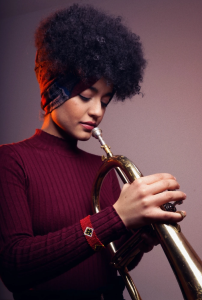
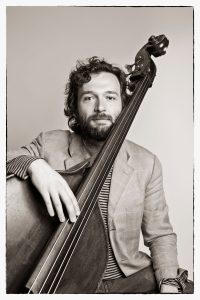

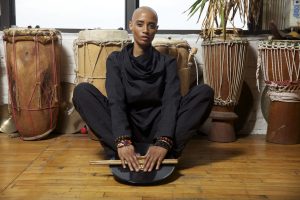
 ESS specializes in placing qualified staff in daily, long-term, and permanent K-12 school district positions including substitute teachers, paraprofessionals, and other school support staff. Over the last 23 years, they have innovated education staffing to provide dynamic solutions to school districts and professional opportunities to passionate educators. Their team serves over 5 million students with a pool of 92,000 substitute and permanent employees throughout 34 states. Internally, the ESS team is comprised of 650 individuals with a passion for education working together to ensure our 900 partner districts experience valuable education every day. You can learn more about them at
ESS specializes in placing qualified staff in daily, long-term, and permanent K-12 school district positions including substitute teachers, paraprofessionals, and other school support staff. Over the last 23 years, they have innovated education staffing to provide dynamic solutions to school districts and professional opportunities to passionate educators. Their team serves over 5 million students with a pool of 92,000 substitute and permanent employees throughout 34 states. Internally, the ESS team is comprised of 650 individuals with a passion for education working together to ensure our 900 partner districts experience valuable education every day. You can learn more about them at